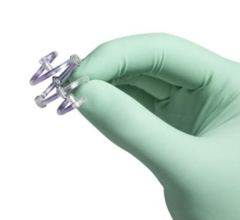
Dec. 13, 2024 — A recent study by the Harvey L. Neiman Health Policy Institute demonstrates that mobile mammography is generally used by women otherwise unlikely to be screened, and thus is complementary to facility-based mammography rather than a substitute for it. Hence, mobile mammography could feasibly increase breast cancer screening rates, especially in traditionally underserved communities. This study, published in Clinical Breast Cancer, was based on 2.6 million women with Medicare fee-for-service insurance during the 2004-2021 period.
Breast cancer is the second leading cause of cancer deaths among women in the United States, making early detection an important step in reducing preventable morbidity and mortality. However, women can face significant hurdles when trying to access facilities that offer mammograms. “Women of color in rural and underserved communities face substantial barriers to accessing breast cancer screening services. Mobile mammography is an innovative and practical solution to address this disparity in cancer care and deliver life-saving screenings and early detection to ensure these women get the critical care they need,” explained Dr. Bhavika Patel, Professor of Radiology, Chair of Research and clinical breast radiologist at the Mayo Clinic Arizona. “In fact, our past work examining trends in screening adherence among indigenous women in the western U.S. showed that rurality and community income play a significant role in declining rates of mammography utilization. We wanted to understand how mobile mammography might offer a way to increase screening rates among those who may not otherwise get breast cancer screening.”
The researchers found that less than half (49.5%) of the women in the study had a mammogram at some point during the 17-year study period. Among those with a mammogram, only 0.4% utilized mobile mammography. This group tended to be younger and non-white, with fewer comorbidities, living in rural and lower income communities. Heat maps of beneficiary density for mobile and facility-based mammography usage demonstrated the complementary nature of mobile mammography; mobile mammography usage covered rural areas where facility-based mammography did not.
“After controlling for various patient factors, we found that American Indian or Alaska Native women were 453% more likely to have mobile mammography than white women. Likewise, women in rural areas or in communities with below average incomes were 210% and 41% more likely to have mobile mammography than urban women or those in above-average-income communities, respectively.” said Dr. Eric Christensen, Research Director at the Neiman Institute. “Indigenous women were also had the lowest rate of screening mammography usage among minority racial and ethnic groups. Hence, our findings suggest that mobile mammography may be particularly helpful in increasing breast cancer screening among these women and other underserved groups.”
“Our results show that mobile mammography is not cannibalizing facility-based mammography; it provides additive access to breast cancer screening. What’s more, it reaches women who might not otherwise get screened, and thus presents a complementary approach to facility-based mammography that may reduce access disparities and increase early detection of breast cancer,” said Casey Pelzl, Senior Economic and Health Services Analyst at HPI and lead researcher on the study. “The low breast cancer screening rate among Medicare beneficiaries, and especially among those women residing in rural and impoverished areas, should catalyze efforts to promote screening access and adherence, particular for the traditionally underserved.”


 July 17, 2024
July 17, 2024 








